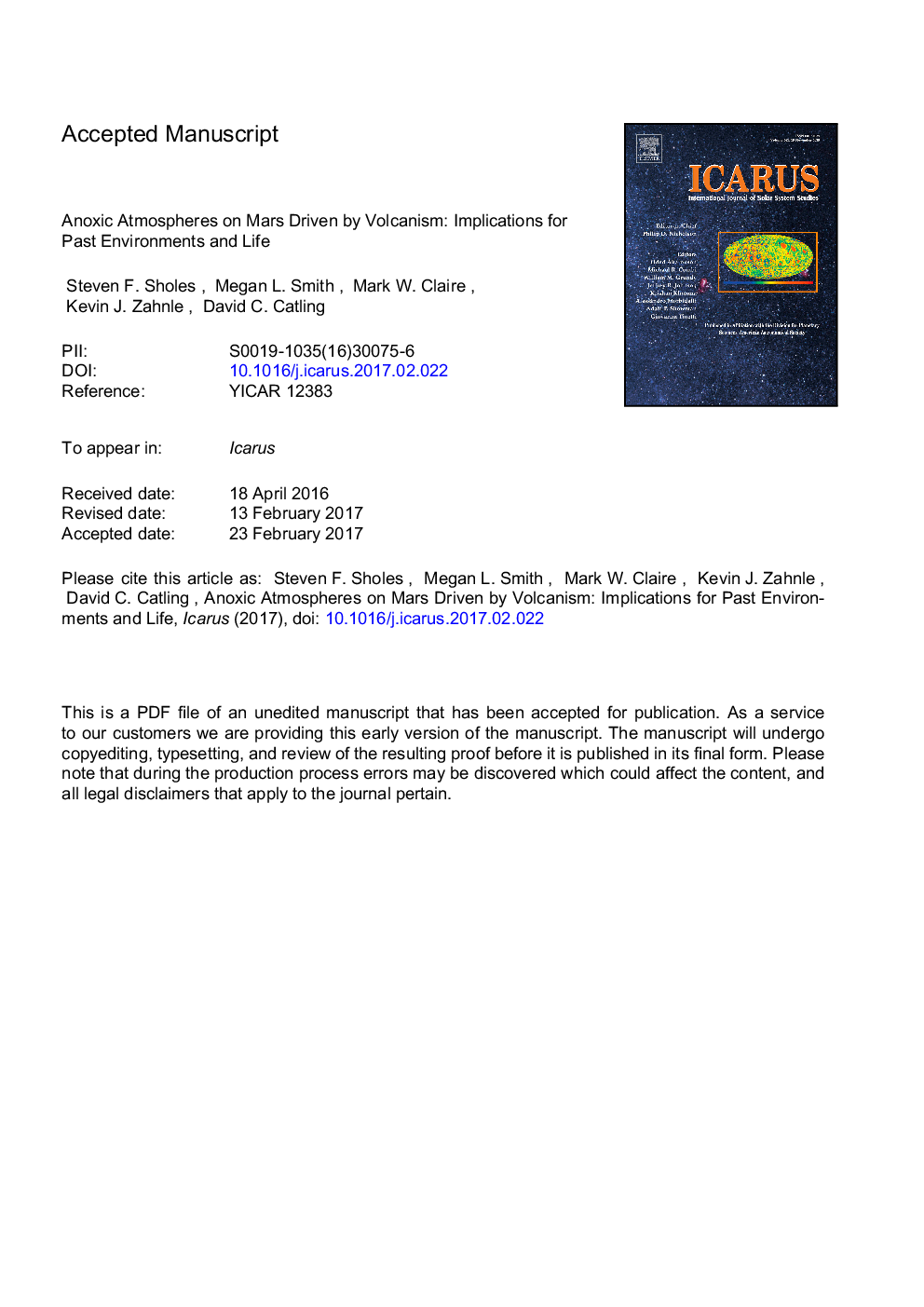| کد مقاله | کد نشریه | سال انتشار | مقاله انگلیسی | نسخه تمام متن |
|---|---|---|---|---|
| 5487033 | 1523501 | 2017 | 40 صفحه PDF | دانلود رایگان |
عنوان انگلیسی مقاله ISI
Anoxic atmospheres on Mars driven by volcanism: Implications for past environments and life
ترجمه فارسی عنوان
اتم های بی هوازی در مریخ بواسطه آتشفشان: تاثیرات محیط های گذشته و زندگی
دانلود مقاله + سفارش ترجمه
دانلود مقاله ISI انگلیسی
رایگان برای ایرانیان
کلمات کلیدی
فضای مریخ، آتشفشان، فتوشیمی، گوگرد، شیمی اتمسفری،
موضوعات مرتبط
مهندسی و علوم پایه
علوم زمین و سیارات
علوم فضا و نجوم
چکیده انگلیسی
Mars today has no active volcanism and its atmosphere is oxidizing, dominated by the photochemistry of CO2 and H2O. Mars experienced widespread volcanism in the past and volcanic emissions should have included reducing gases, such as H2 and CO, as well as sulfur-bearing gases. Using a one-dimensional photochemical model, we consider whether plausible volcanic gas fluxes could have switched the redox-state of the past martian atmosphere to reducing conditions. In our model, the total quantity and proportions of volcanic gases depend on the water content, outgassing pressure, and oxygen fugacity of the source melt. We find that, with reasonable melt parameters, the past martian atmosphere (â¼3.5Â Gyr to present) could have easily reached reducing and anoxic conditions with modest levels of volcanism, >0.14Â km3Â yrâ1, which are well within the range of estimates from thermal evolution models or photogeological studies. Counter-intuitively we also find that more reducing melts with lower oxygen fugacity require greater amounts of volcanism to switch a paleo-atmosphere from oxidizing to reducing. The reason is that sulfur is more stable in such melts and lower absolute fluxes of sulfur-bearing gases more than compensate for increases in the proportions of H2 and CO. These results imply that ancient Mars should have experienced periods with anoxic and reducing atmospheres even through the mid-Amazonian whenever volcanic outgassing was sustained at sufficient levels. Reducing anoxic conditions are potentially conducive to the synthesis of prebiotic organic compounds, such as amino acids, and are therefore relevant to the possibility of life on Mars. Also, anoxic reducing conditions should have influenced the type of minerals that were formed on the surface or deposited from the atmosphere. We suggest looking for elemental polysulfur (S8) as a signature of past reducing atmospheres. Finally, our models allow us to estimate the amount of volcanically sourced atmospheric sulfate deposited over Mars' history, approximately â¼106-109Â Tmol, with a spread depending on assumed outgassing rate history and magmatic source conditions.
ناشر
Database: Elsevier - ScienceDirect (ساینس دایرکت)
Journal: Icarus - Volume 290, 1 July 2017, Pages 46-62
Journal: Icarus - Volume 290, 1 July 2017, Pages 46-62
نویسندگان
Steven F. Sholes, Megan L. Smith, Mark W. Claire, Kevin J. Zahnle, David C. Catling,
